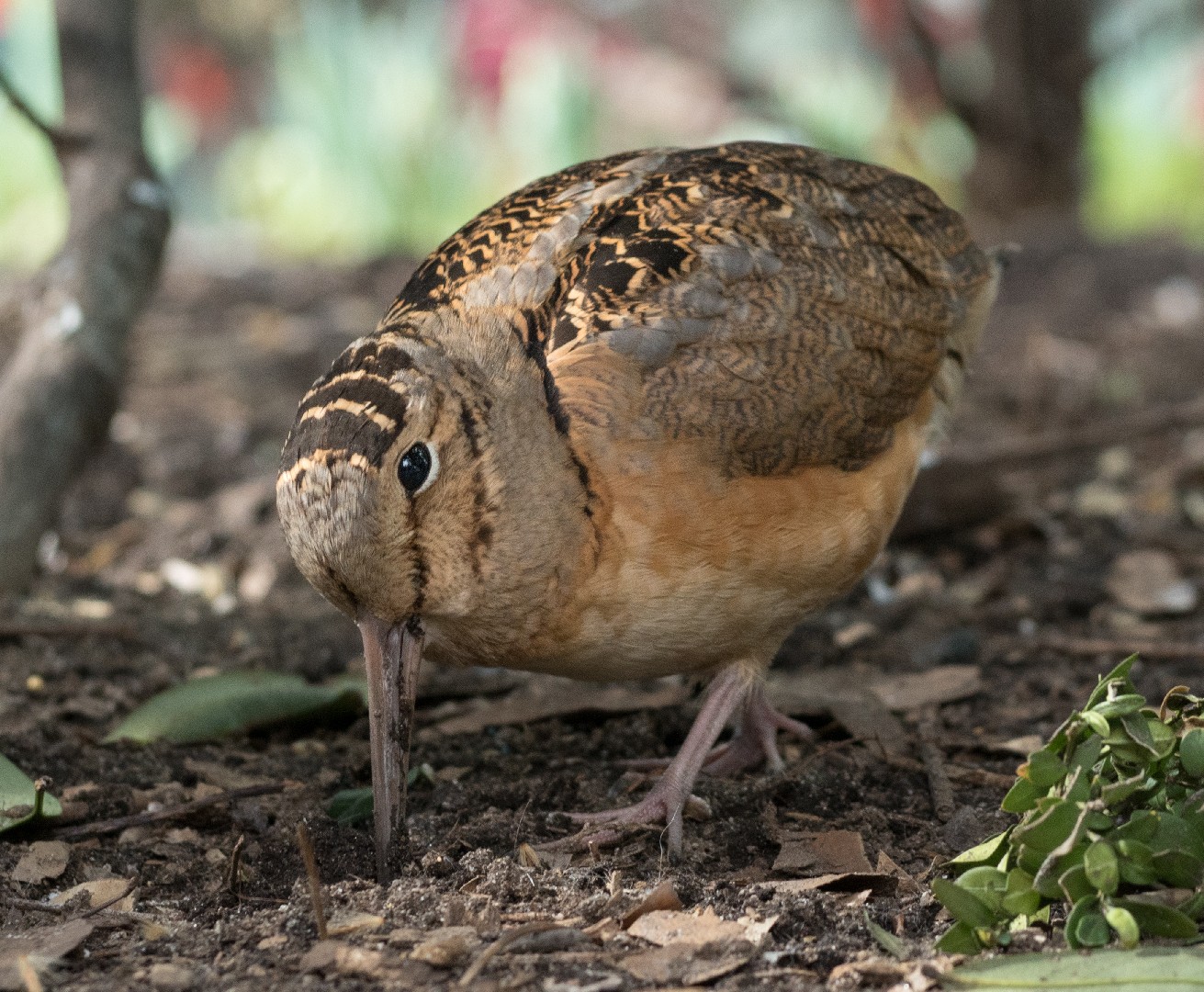American Woodcock
A species of Woodcocks, Also known as Night Partridge, Marsh Plover, Hookum-pake, Bogborer, Mud Hen Scientific name : Scolopax minor Genus : Woodcocks
American Woodcock, A species of Woodcocks
Also known as:
Night Partridge, Marsh Plover, Hookum-pake, Bogborer, Mud Hen
Botanical name: Scolopax minor
Genus: Woodcocks
 Photo By Rhododendrites , used under CC-BY-SA-4.0 /Cropped and compressed from original
Photo By Rhododendrites , used under CC-BY-SA-4.0 /Cropped and compressed from original Description
A cute bird with a long pointy beak, the american Woodcock is rarely seen during the day. It becomes active during the low-light hours of dusk, dawn, and moonlit nights. Males perform a unique flight display on spring nights in which they give a buzzy call, then launch into the air, flying around erratically before making a steep dive back down to the ground.
Size
25 - 30 cm
Life Expectancy
8-11 years
Nest Placement
Ground
Clutch Size
1 - 5 eggs
Number of Broods
20 - 22 days
Feeding Habits
American Woodcock's diet is primarily earthworms, supplemented with invertebrates like insects and snails found by probing moist soil with a specialized bill. They also consume seeds and plant material. Typically active at dawn and dusk, american Woodcock exhibit unique foraging by rocking to detect prey movement.
Habitat
American Woodcock's habitat consists of young deciduous forests and thickets within wetlands, especially those with moist soil, young trees like aspen and birch, and dense underbrush such as alder. These birds occupy low altitude regions in eastern North America, using forest clearings and old fields. In winter, they prefer wooded riverside areas and wet meadows in southern regions, including the Gulf States.
Nest Behavior
American Woodcock typically lays eggs directly on the ground without much alteration to the site. After egg laying, the female solely incubates and rears the young.
Nest Characteristics
American Woodcock's nest is a shallow, unlined depression about 5 inches across and 1.5 inches deep, often concealed among leaf and twig litter in young upland woods.
Dite type
Insectivorous
People often ask
Migration Overview
Woodcock migrate at night. In the North, woodcock begin to shift southward before ice and snow seal off their ground-based food supply. Cold fronts may prompt heavy southerly flights in autumn. Most woodcock start to migrate in October, with the major push from mid-October to early November. Most individuals arrive on the wintering range by mid-December. The birds head north again in February. Most have returned to the northern breeding range by mid-March to mid-April. 
General Info
Feeding Habits
Bird food type
Behavior
The american Woodcock partakes in a distinctive ‘sky dancing’ courtship ritual at dawn and dusk, initiating early in specific regions. With polygynous breeding habits, males take no part in parenting. Females demonstrate protective behavior, abandoning or feigning injury to protect their nests. The female's role is fleeting, tending to chicks only until dry, with young probing for food days post-hatching and gaining independence within a month. Solitary outside mating seasons, american Woodcock may occasionally form minor clusters and display rare bill-tugging interactions.
Distribution Area
Woodcock inhabit forested and mixed forest-agricultural-urban areas east of the 98th Meridian. Woodcock have been sighted as far north as York Factory, Manitoba, east to Labrador and Newfoundland. In winter, they migrate as far south as the Gulf Coast States. 
Species Status
The American woodcock is not considered globally threatened by the IUCN. It is more tolerant of deforestation than other woodcocks and snipes; as long as some sheltered woodland remains for breeding, it can thrive even in regions that are mainly used for agriculture. The estimated population is 5 million, so it is the most common sandpiper in North America. 
Scientific Classification
Phylum
Chordates Class
Birds Order
Shorebirds Family
Sandpipers Genus
Woodcocks Species
American Woodcock